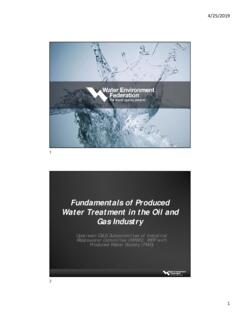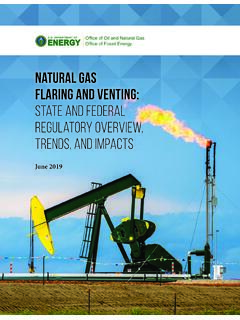Transcription of 1 Bipartisan Infrastructure Investment and Jobs Act Summary
1 1 Bipartisan Infrastructure Investment and Jobs Act Summary A Road to Stronger Economic Growth August 7, 2021 2 Table of Contents Topline Summary .. 3 Portman, Sinema Statement on CBO Score for Bipartisan Infrastructure Investment & Jobs Act .. 5 Spending Pay-Fors .. 6 Economic Benefits of the Infrastructure Investment and Jobs 7 Widespread Support for the Infrastructure Investment & Jobs Act .. 7 Survey Data: Americans Overwhelmingly Support Fixing Our Nation s Infrastructure .. 8 Roads, Bridges & Major 11 Safety & Research .. 63 Public Transit .. 65 Airports .. 66 Ports/Waterways .. 67 Broadband .. 69 Power Infrastructure .. 71 Senate Energy and Natural Resources .. 72 Energy Infrastructure Act Section-by-Section .. 72 Resiliency BRIC .. 88 Resiliency Waste Management .. 89 Resiliency 90 Resiliency Ecosystems .. 92 Resiliency Wildfire Management .. 93 Resiliency Cyber .. 95 Low/No Carbon Buses and Ferries .. 96 State and Tribal Assistance Grants: Brownfields.
2 111 Superfund: Remedial .. 112 Private Sector Leveraging Provisions in the Bipartisan Infrastructure Framework .. 113 Cryptocurrency .. 116 3 Topline Summary Historic Investment in nation s core Infrastructure priorities including roads and bridges, rail, transit, ports, airports, the electric grid, and broadband. No tax hikes. Includes Bipartisan Senate-passed water Infrastructure bill and Bipartisan committee-passed Commerce and EPW surface transportation bills, along with ENR energy Infrastructure bill. Improves permitting by including enhanced FAST-41 program, which has substantially reduced the permitting timeline for larger Infrastructure projects while maintaining environmental standards. Makes a down payment on the Infrastructure needed for a low-carbon economy and helps to reduce emisssions and improve the environment. Includes rural Infrastructure development and dedicated new funds for major projects. Long-term spending for capital assets that will improve economic efficiency, productivity, GDP and revenue, and will not increase inflation.
3 $550 Billion In New Spending Over 5 Years Roads, Bridges, & major projects: $110B - Includes Commerce and EPW-passed surface transportation reauthorization bills. Funds new, dedicated grant program to replace and repair bridges and increases funding for the major project competitive grant programs. At the same time, the package preserves the 90/10 split of federal highway aid to states. Passenger and Freight Rail: $66B - Provides funding for the Amtrak National Network for new service and dedicated funding to the Northeast Corridor, which has incurred a severe repair backlog after Hurricane Sandy. Increases funding for freight rail and safety. Safety and Research: $11B - Funds highway & pedestrian safety and research programs, as well as pipeline safety and repair. Public Transit: $ - Funds nation s transit system repair backlog, which DOT estimates is more than 24,000 buses, 5,000 rail cars, 200 stations, and thousands of miles of track, signals, and power systems.
4 Broadband: $65B - Grants to states for broadband deployment and other efforts to close the digital divide. Expands eligible private activity bond projects to include broadband Infrastructure . Airports: $25B - Increases funds for Airport Improvement grant program for runways, gates, & taxiways as well as a new Airport Terminal Improvement program for terminals, concessions, and multimodal connections. Ports and Waterways: $ - Funding for waterway and coastal Infrastructure , inland waterway improvements, port Infrastructure , and land ports of entry through the Army Corps, DOT, Coast Guard, the GSA, and DHS. Water Infrastructure : $54B - Includes the Bipartisan Drinking Water and Wastewater Infrastructure Act. Provides a historic $15 billion for lead service line replacement and $10 billion to address PFAS. 4 Supports water Infrastructure in Tribal communities by providing $ billion for the Indian Health Service Sanitation Facilities Construction program, in addition to funding to complete all currently-authorized Indian Water Rights Settlements.
5 Power and Grid: $65B - Includes the Bipartisan Energy Infrastructure Act, which includes funds for grid reliability and resiliency and support for a Grid Development Authority; critical minerals and supply chains for clean energy technology; key technologies like carbon capture, hydrogen, direct air capture, and energy efficiency; and energy demonstration projects from the Bipartisan Energy Act of 2020. Resiliency: $46B - Funding for cybersecurity to address critical Infrastructure needs, flood mitigation, wildfire, drought, coastal resiliency, waste management, ecosystem restoration, and weatherization. Low-Carbon and Zero-Emission School Buses & Ferries: $ - Funds for the adoption of low-carbon and zero-emission school buses, including through hydrogen, propane, LNG, compressed natural gas, biofuel, and electric technologies. Provides support for a pilot program for low emission ferries and rural ferry systems. Electric Vehicle Charging: $ Funds for alternative fuel corridors and to build out a national network of electric vehicle charging Infrastructure to facilitate long-distance travel and to provide convient charging where people live, work, and shop.
6 The federal funding will have a particular focus on rural disadvantaged, and hard-to-reach communities. Reconnecting Communities: $1B Funds for projects that remove barriers to opportunity caused by legacy Infrastructure . The program will provide dedicated funding for planning, design, demolition, and reconstruction of street grids, parks, or other Infrastructure . Addressing Legacy Pollution: $21B Funds to clean up brownfield and superfund sites, reclaim abandoned mine lands, and plug orphan oil and gas wells, improving public health and creating good-paying jobs. 5 Portman, Sinema Statement on CBO Score for Bipartisan Infrastructure Investment & Jobs Act The Bipartisan legislation the Senate is now considering is a historic Investment in our nation s core Infrastructure needs including roads and bridges, rail, transit, ports, airports, the electric grid, broadband, and much more. This Investment is being made without new tax hikes on everyday families.
7 Independent studies have shown that the long-term spending for capital assets in this measure will improve economic efficiency and productivity, increase GDP, generate additional revenue, and will not increase inflation. The CBO score says that the cost of the bill is $228 billion over five years and $415 billion over 10 years, and the offsets we have identified total $519 billion. The new spending under the bill is offset through a combination of new revenue and savings, some of which is reflected in the formal CBO score and some of which is reflected in other savings and additional revenue identified in estimates, as CBO is limited in what it can include in its formal score. The American people strongly support this Bipartisan legislation and we look forward to working with our colleagues on both sides of the aisle and President Biden to get it passed through Congress and signed into law. ### 6 Spending Pay-Fors $53 billion from certain states unused enhanced federal UI supplements (Source: CBO estimate) $67 billion in unused savings from the COVID-19 employer retention tax credit that CBO projected would be utilized and were not, minus the impact of sunsetting the credit (CBO letter) $106 billion in unused savings from COVID-19 paid & family leave tax credits that CBO projected would be utilized and were not (CBO letter) $51 billion from delaying Medicare Part D rebate rule (Source: CBO score) $ billion in rescissions in unused funding from 2020 COVID bills (Source: CBO score) $ billion from sales of future spectrum auctions (Source: CBO score) $67 billion from proceeds of the February 2021 c-band auction (Source: CBO estimate) $53 billion in economic growth resulting from a 33 percent return on Investment in these long-term Infrastructure projects (Source.)
8 CBO analysis) $28 billion from clarifying the application of information reporting requirements for cryptocurrency (Source: JCT score) $21 billion from extending fees on GSEs (Source: CBO score) $ billion from reinstating certain Superfund fees (Source: JCT score) $ billion from extending the mandatory sequester (Source: CBO score) $ billion in sales from the Strategic Petroleum Reserve (Source: CBO score) $ billion from extending customs user fees (Source: CBO score) $ billion in savings from reducing Medicare spending on discarded medications from large, single-use drug vials (Source: CBO score) $ billion from extending available interest rate smoothing options for defined benefit pension plans (Source: JCT score) TOTAL OFFSETS = $519 billion 7 Economic Benefits of the Infrastructure Investment and Jobs Act The Infrastructure Investment & Jobs Act will grow our economy, create jobs and increase wages, and reduce inflation.
9 Economic growth will occur as a result of our economy becoming more efficient, with new and improved Infrastructure making it less costly for businesses to operate while making workers more productive. As business efficiency and worker productivity improve, so will wages. The resulting economic growth, with more, higher-paying jobs means the federal government will be able to collect additional revenues without raising taxes. This spending on capital assets is a critical Investment in our nation s long-term economic growth, paving the way to a higher standard of living and stronger economic growth that will generate additional federal revenue for deficit reduction. Penn Wharton Budget Model (PWBM) The PWBM says that the Infrastructure Investment & Jobs Act will increase hourly wages by within 10 years and will reduce government debt by by 2050. They said, [t]he additional private capital makes workers more productive. Workers productivity is reflected in an increase in increases because of the larger increase in productive private capital.
10 Douglas Holtz-Eakin (American Action Forum) A well -structured Infrastructure bill would boost the supply side of the economy, reducing inflationary pressures. Improving roads, bridges, and ports would make it less costly for businesses to operate, allowing them to increase their output per hour, and putting downward pressure on consumer prices. In addition to boosting productivity, the timing of the proposed Infrastructure plans mitigates concern about inflation. The goal of the proposed Infrastructure plan is not to boost the demand side of the economy, giving it a quick, Keynesian jolt through shovel-ready projects. This type of Infrastructure spending could be inflationary. Instead, the goal is to increase the productive capacity of the economy over the course of nearly one decade. Michael Strain (AEI) There are good reasons to believe this Bipartisan Infrastructure spending won t be inflationary. Its focus is on improving longer-term productivity, not near-term demand.



